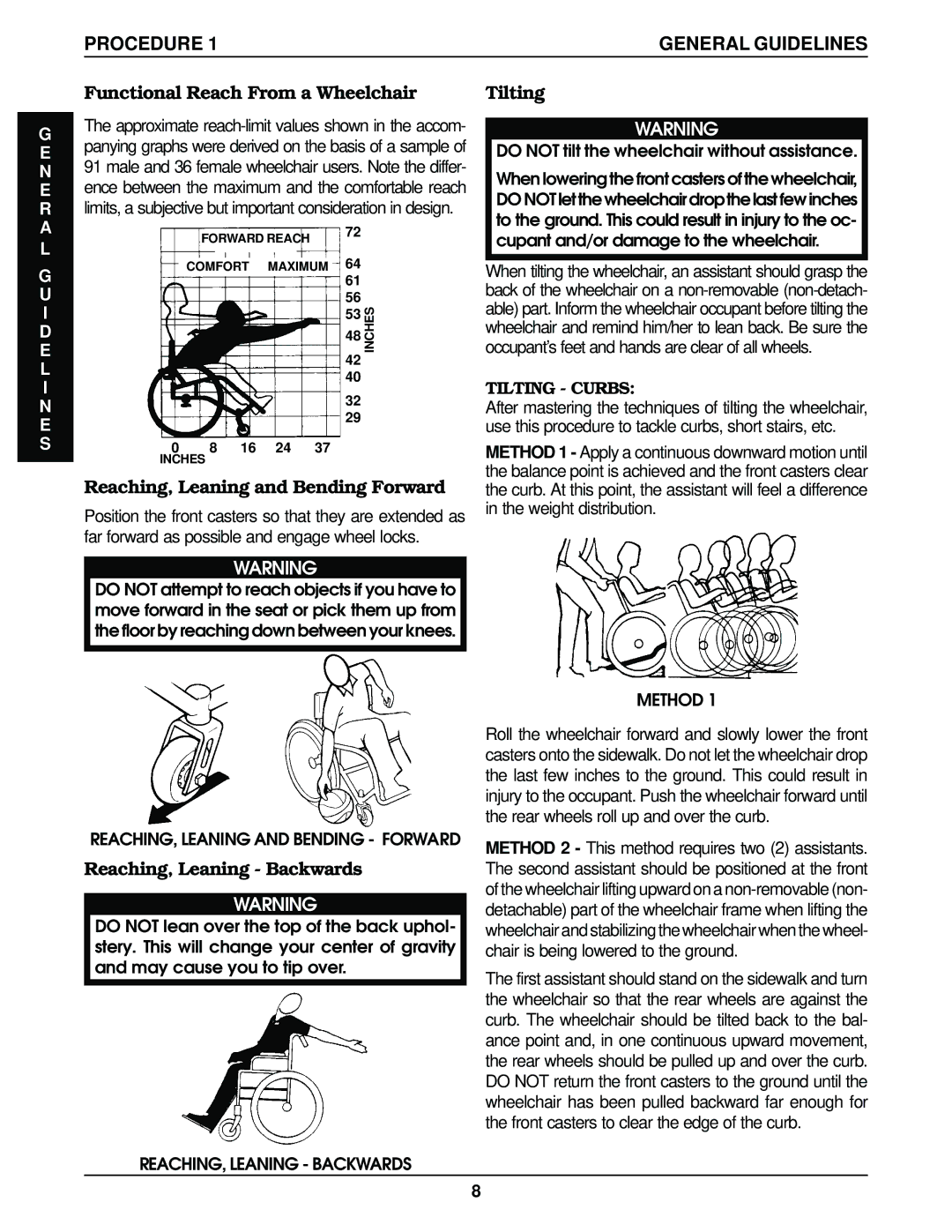Top End Terminator Jr specifications
The Invacare Top End Terminator Jr is a premier wheelchair designed specifically for young athletes, providing both performance and versatility. It caters to the needs of competitive youth athletes, ensuring superior functionality and comfort during sports activities. The Terminator Jr blends advanced technology with thoughtful design, allowing young users to experience the thrill of competitive racing.One of the standout features of the Terminator Jr is its lightweight aluminum frame. This construction not only enhances portability but also ensures that the wheelchair is robust enough to withstand the rigors of competitive sports. The frame is designed to provide optimal rigidity and stability, which translates into improved performance during races.
The Terminator Jr boasts an adjustable camber. This feature allows users to modify the angle of the wheels for increased speed and maneuverability. By altering the camber, athletes can optimize their performance based on personal preference and training requirements, making it an adaptable choice for different racing conditions and environments.
Another significant aspect of the Terminator Jr is its high-quality wheels and tires. The wheelchair is equipped with specialized racing wheels that offer excellent traction and control on various surfaces. The tires are designed for speed while ensuring stability, contributing to a superior racing experience.
The seat and backrests of the Terminator Jr are designed with comfort and support in mind. The seating system is adjustable, allowing for customization according to the athlete’s size and needs. This level of personalization helps to prevent discomfort during long periods of use, enabling young athletes to focus entirely on their performance.
Additionally, the Terminator Jr includes a variety of accessory options, such as footrests and backrest supports, which can be tailored to the athlete's preferences. This adaptability is key in ensuring that the wheelchair meets the specific requirements of different sports and individual users.
Safety and durability are paramount in the design of the Invacare Top End Terminator Jr. Its superior construction ensures that it can handle the physical demands of competitive racing, providing athletes with peace of mind as they focus on their performance.
In summary, the Invacare Top End Terminator Jr is a cutting-edge racing wheelchair that emphasizes performance, comfort, and customization. With its lightweight aluminum frame, adjustable camber, high-quality wheels, and customizable seating, it stands out as an excellent choice for young athletes committed to excelling in their chosen sports.

